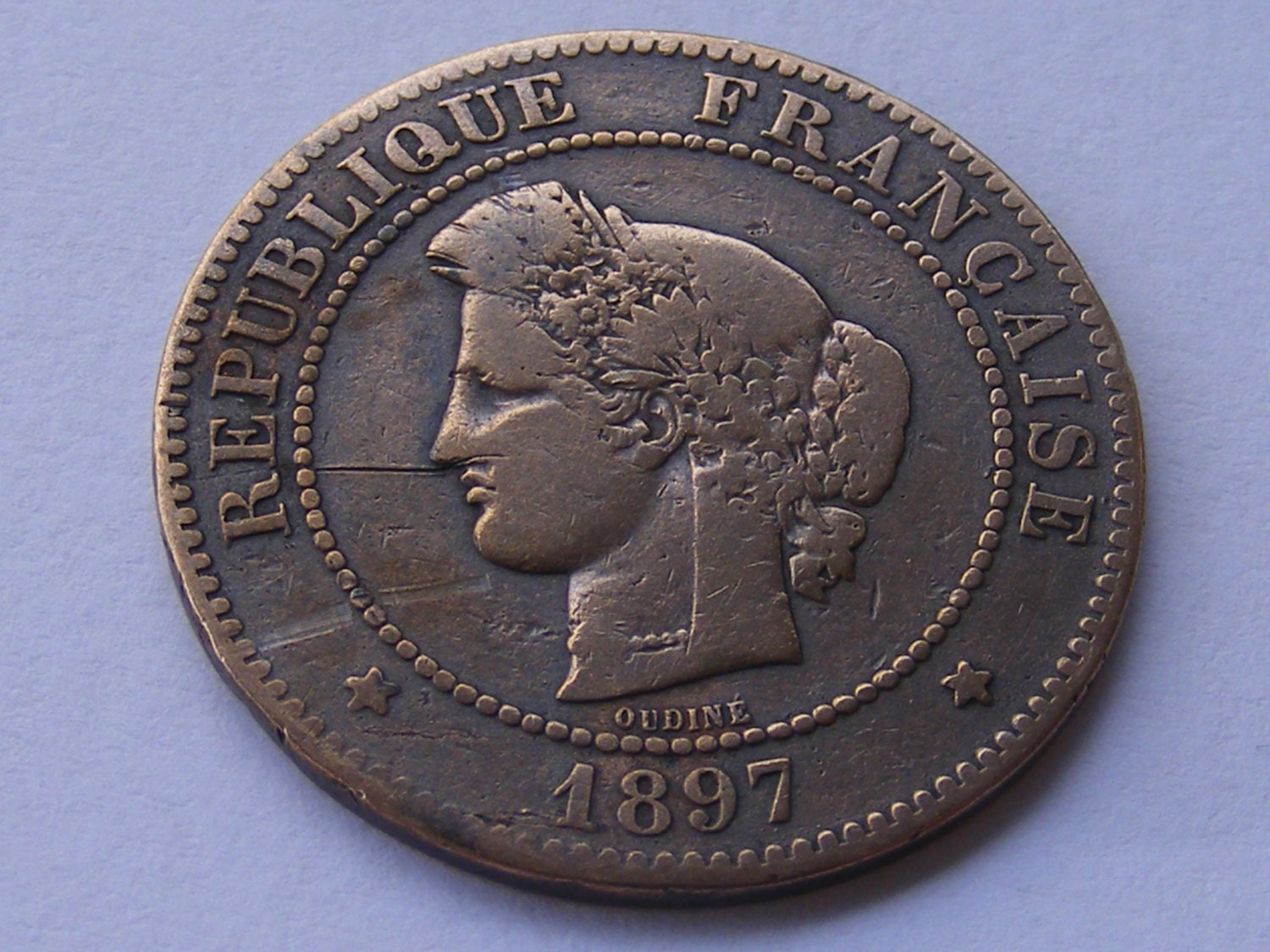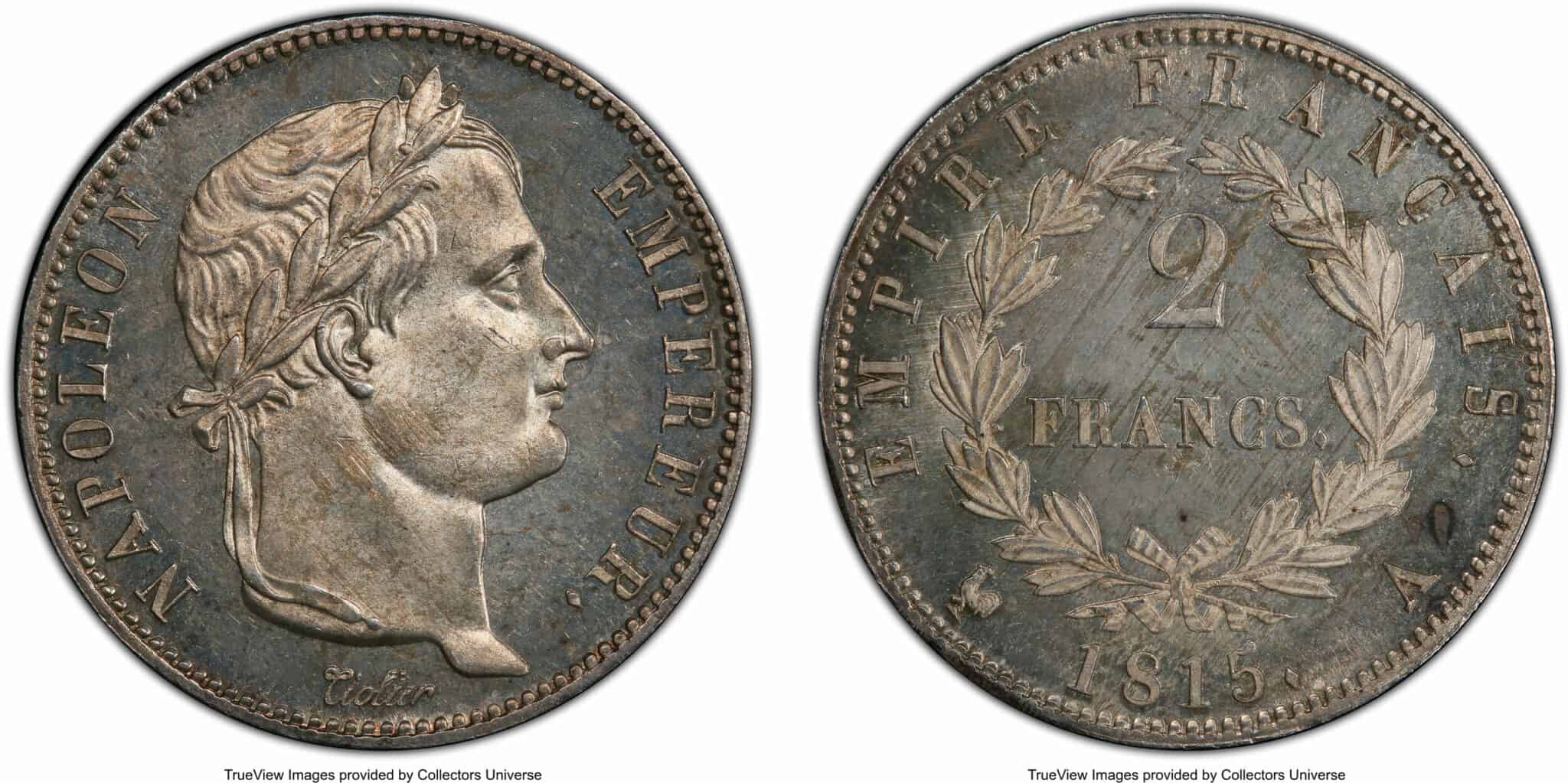Historical Context of Old French Coins

Old french coin nyt – The history of French coinage is a long and fascinating one, dating back to the Middle Ages. The first French coins were minted in the 7th century AD, and they quickly became an important part of the French economy. Coins were used to pay for goods and services, and they were also used to store wealth.
The designs of French coins have changed over the centuries, but some of the most iconic designs have remained the same. The franc, for example, has been the official currency of France since the 14th century. The franc has undergone several changes over the years, but it has always retained its basic design. Other iconic French coins include the ecu, the louis d’or, and the napoleon.
Old French coins are not only beautiful objects, but they are also important historical artifacts. They can tell us a great deal about the history of France and the French people. Coins can tell us about the economic conditions of a particular period, and they can also tell us about the political and social changes that were taking place.
The old French coin, with its intricate engravings and faded patina, whispered tales of a bygone era. It evoked a time when knights roamed the land and noble ladies held court. Yet, as I gazed at it, my thoughts drifted to another time and place—to the realm of Westeros, where the battle for the Iron Throne raged on.
The question that burned in my mind was not the value of the coin but what time does Game of Thrones air ? For in that epic tale, the clash of swords and the machinations of power echoed through the ages, reminding me that the human heart, with its desires and ambitions, remained an eternal constant.
The Origins of French Coinage, Old french coin nyt
The origins of French coinage can be traced back to the 7th century AD, when the Merovingian kings began to mint coins in their own names. These early coins were made of gold and silver, and they were used to pay for goods and services. The designs of these early coins were often simple, and they typically featured the name of the king and a cross.
In the 9th century AD, the Carolingian kings began to mint coins in their own names. These coins were also made of gold and silver, and they were used to pay for goods and services. The designs of these coins were more elaborate than the Merovingian coins, and they often featured the image of the king and a cross.
In the labyrinthine corridors of history, the allure of old French coins, imbued with tales of bygone eras, captivates the imagination. Yet, amidst the patina of time, a flicker of modern intrigue emerges. Rosabell Laurenti Sellers, the enigmatic actress, graces our screens with her ethereal presence.
Like the delicate imprint on an ancient coin, her performances leave an indelible mark on our hearts. And so, the timeless allure of old French coins intertwines with the vibrant spirit of Rosabell Laurenti Sellers, creating a tapestry of intrigue that spans centuries.
In the 10th century AD, the Capetian kings began to mint coins in their own names. These coins were also made of gold and silver, and they were used to pay for goods and services. The designs of these coins were even more elaborate than the Carolingian coins, and they often featured the image of the king and a cross.
The old French coin, a relic of a bygone era, lay forgotten in a dusty drawer. Its intricate engravings hinted at a rich history, but its value had long since faded. Yet, as I stumbled upon an article about Game of Thrones banners in New York City , a flicker of recognition sparked within me.
The banners, with their vibrant colors and bold sigils, reminded me of the old coin’s forgotten grandeur, a testament to the enduring power of symbols and the stories they carry.
The Evolution of French Coinage
The evolution of French coinage continued throughout the Middle Ages. In the 12th century AD, the first silver coins were minted in France. These coins were called deniers, and they were used to pay for small purchases. In the 13th century AD, the first gold coins were minted in France. These coins were called florins, and they were used to pay for large purchases.
In the 14th century AD, the franc was introduced as the official currency of France. The franc was a gold coin, and it was used to pay for all types of purchases. The franc has undergone several changes over the years, but it has always retained its basic design.
As the sun dipped below the horizon, casting a golden glow upon the ancient city, a single old French coin lay forgotten in the gutter. Its surface was tarnished with age, but its intricate design hinted at a rich history.
This coin had witnessed countless transactions, from the purchase of bread to the payment of blood and cheese (a delicacy that once graced the tables of kings). Now, it lay abandoned, a silent testament to the passage of time and the ephemeral nature of wealth.
In the 16th century AD, the first copper coins were minted in France. These coins were called liards, and they were used to pay for small purchases. In the 17th century AD, the first bronze coins were minted in France. These coins were called sous, and they were used to pay for small purchases.
In the annals of numismatics, the old French coin NYT has garnered significant attention. Its intricate designs and historical significance have made it a coveted artifact. While the world mourns the passing of a beloved French singer , it is worth reflecting on the enduring legacy of the old French coin NYT, a testament to the artistry and craftsmanship of a bygone era.
In the 18th century AD, the French Revolution led to a number of changes in the French coinage system. The franc was replaced by the livre, and a new system of coins was introduced. The new coins were made of copper, silver, and gold, and they were used to pay for all types of purchases.
In the 19th century AD, the franc was reintroduced as the official currency of France. The franc has undergone several changes over the years, but it has always retained its basic design.
The Significance of Old French Coins
Old French coins are not only beautiful objects, but they are also important historical artifacts. They can tell us a great deal about the history of France and the French people. Coins can tell us about the economic conditions of a particular period, and they can also tell us about the political and social changes that were taking place.
For example, the coins of the Merovingian period can tell us about the rise of the Frankish kingdom. The coins of the Carolingian period can tell us about the expansion of the Frankish empire. The coins of the Capetian period can tell us about the development of the French monarchy. And the coins of the French Revolution can tell us about the rise of the French Republic.
Old French coins are a valuable resource for historians and other scholars. They can help us to understand the past and to better appreciate the present.
Types and Designs of Old French Coins: Old French Coin Nyt

Old French coins were diverse in types and designs, reflecting the rich history and artistry of the French nation. These coins varied in denominations, from small fractional pieces to large gold coins, each with its unique characteristics and symbolism.
Denominations
- Denier: The most common coin, made of silver or billon (an alloy of silver and copper).
- Gros: A larger silver coin, worth 12 deniers.
- Écu: A gold coin, first issued in the 13th century, worth 3 livres.
- Louis d’or: A gold coin, introduced in the 17th century, worth 20 livres.
Designs
The designs of old French coins showcased a range of artistic styles and symbolic motifs. Early coins often featured simple geometric patterns or religious symbols. As the French monarchy grew in power and prestige, coins became more elaborate, adorned with portraits of kings, heraldic devices, and allegorical figures.
Artistic Elements
- Obverse: Typically featured the portrait of the reigning monarch or a national symbol.
- Reverse: Often displayed a cross, a coat of arms, or other religious or political symbols.
- Legend: An inscription around the edge of the coin, usually indicating the monarch’s name, title, and the mint where it was struck.
Symbolic Elements
- Fleur-de-lis: A stylized lily, a symbol of the French monarchy since the 12th century.
- Cross: A symbol of Christianity, often featured on early French coins.
- Crown: A symbol of royal authority, often depicted on coins of kings and queens.
Value and Collection of Old French Coins

The worth of old French coins is influenced by a variety of elements, including rarity, condition, and historical importance. Rarity refers to the number of coins minted and how many still exist today. Condition refers to the physical state of the coin, including any damage or wear. Historical importance refers to the coin’s significance in terms of its age, design, or association with a particular event or figure.
Market for Collecting Old French Coins
The market for collecting old French coins is robust, with collectors from around the world seeking rare and valuable pieces. There are a number of strategies involved in collecting old French coins, including:
- Specialization: Collectors may choose to focus on a particular type of coin, such as gold coins, silver coins, or coins from a specific period of French history.
- Condition: Collectors may prefer coins that are in mint condition, with no damage or wear.
- Rarity: Collectors may seek out rare coins that are difficult to find.
- Historical importance: Collectors may be interested in coins that are associated with important historical events or figures.
The value of old French coins can vary greatly depending on these factors. Some coins may be worth only a few dollars, while others may be worth thousands or even millions of dollars.